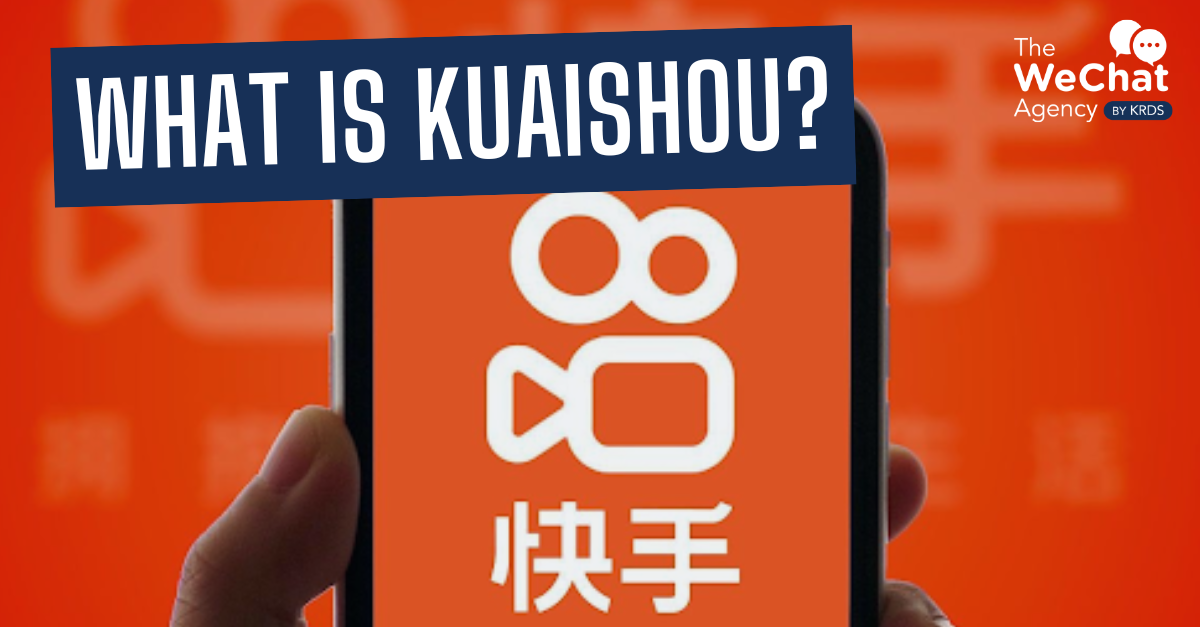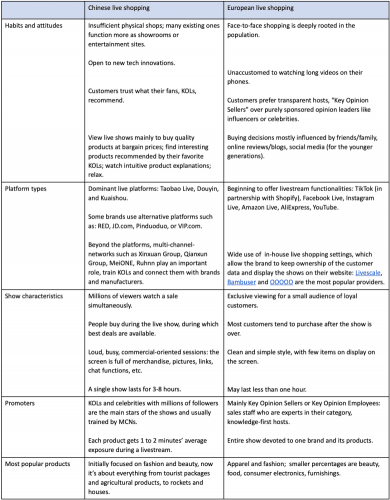Weibo MAU grew to 573 million in Q3 2021
Monthly active users (“MAUs”) on Weibo totalled 573 million in September 2021, an increase of 62 million people year over year. Mobile MAUs accounted for 94% of all MAUs.
In September 2021, the average daily active users (“DAUs”) were 248 million, an increase of 23 million users year over year.
Weibo’s overall net revenues for the third quarter of 2021 were $607.4 million, up 30% from $465.7 million in the same period the previous year.
Link: https://www.chinainternetwatch.com/31281/weibo-quarterly/
Top 5 Cross-Border Retail Trends to Watch That Are Captivating Chinese Consumers
No. 5 The ‘Fur Baby’ Boom: Pet owners in China are increasingly viewing their animals as family members. This shift in behaviour has spawned a thriving business that includes anything from luxury pet diets and “smart litter boxes” to cat and dog cosmetic products.
No. 4 Healthy Snacking: From edible cosmetic items to gummy vitamins and individualised dietary-supplement kits, young consumers are driving the growth of a new breed of health-and-wellness consumables.
No. 3 Haircare is the New Skincare: China is the second-largest market globally for the hair care industry after the United States. It will likely grow at a CAGR of 4.9% up to 2025, faster than the U.S. at 3.4%, according to market research company Euromonitor.
No. 2 Ingredient-based Beauty: China’s increasing community of skincare ingredient aficionados, or “skintellectuals,” has opened doors for developing beauty companies like Murad, Obagi, Kate Somerville, and The Ordinary, which focus on effective, high-performance ingredients.
No. 1 Vintage in Vogue: As homebound customers tidy and adopt sustainability, the pandemic has boosted the resale of luxury objects. If the 11.11 shopping festival and Black Friday are any clue, China’s shopping habit is picking up momentum. Since last year, Tmall Global has attracted a number of well-known Japanese luxury resale stores, including Brand Off, Reclo, Daikokuya, and Brandear.
KAWO 2022 Ultimate Guide to China Social Media
China’s internet penetration is still only 71.6%, compared to nearly 90% in Europe and North America, indicating that there is still room for improvement. The fastest-growing segments were rural users, who saw a 48% increase in internet penetration, and over-50-year-olds, who saw a 5.2% increase in internet prevalence since 2020, with 22 million joining in the last six months.
The targeting choices on Chinese social media platforms are limited, and with China’s new privacy rules, you know even less about your audience. As a result, you may need to make sure that your content strategy includes a variety of information that is tailored to different types of users. Messages that appeal to a middle-class, college-educated city dweller are likely to differ significantly from those aimed to younger consumers in China’s rural areas. Consider building distinct social channels for each of your target audiences.
Virtual Property Tours – 35x increase in VR house tours between agents and prospective buyers on platform Beike VR. The U.S.-centric model of Boomer, Gen X and Gen Y are meaningless in China’s context. Instead, distinct generational groupings are defined with 后 (hòu). The character ‘后’ means “after”. So instead of “Baby Boomers” or “Millennials”, in China we typically talk about generations in decades e.g. “after 90’s”. You’ll even hear people discussing 95后 — or post 1995 — so rapid are the changes!
When you maintain your customers on one platform, their trip will always be easier. However, Taobao links may now be viewed within the WeChat environment, and Taobao has launched a Taobao Feed that can be synced with WeChat contacts to share purchases.
Neither platform has yet added the ability to accept payment methods from their competitors. Brands in a hurry to avoid being left behind by ‘China Speed’ should remember that China has been a market for thousands of years, and while the channels may have changed, the fundamentals haven’t changed.
Link: https://kawo.com/en/ultimate-guide-to-china-social-media-marketing-2022/pdf-view
Opinion: The Digital Revolution, The Metaverse and The Quest For A Whole New Luxury
Online channels influence nearly 75% of all luxury purchases and big and small brands make announcements about diving into the metaverse on a daily basis. There is nothing more exciting to an industry willing to shape every single creative detail that follows a specific aesthetic vision than to be fully immersed into a wonderland of a virtual project, where democratic luxury can develop and expand and there are no limits posed by the rarity of raw materials and human savoir-faire.
The virtual environment offers the impression that every detail of an event can be managed and altered in accordance with the brand’s aims, and that everything can be designed exactly as planned and expected.
The term “Web3” refers to the third wave of internet innovation, which will undoubtedly have an impact on how people live, how brands work on brand awareness and appeal, and, last but not least, how consumers approach the purchasing process.
Brands are pursuing sustainability
According to Mckinsey research, over 80% of Chinese interviewees would pay for environmentally friendly packaging. Green buying is popular among Chinese shoppers. As the government promotes the concept of sustainable consumption, brands are paying more attention to it.
In fast fashion, the brands start from the fabric, using degradable materials:
- Blue skylab (belong to car brand NIO): Used the remaining materials after the car production to make shoes.
- Timberland: Built a pop-up shop by using the Sugar cane. The pop shop itself and the decorations in the shop were made by sugar cane. They use sustainable and recycled materials to create goods.
- Adidas: Leveraged the recreation of the old clothes. They invited hundreds of designers and students from art college to join the campaign.
In the food and beverage industry:
- Starbucks: Opened the world’s first environmental protection experimental store in September, the furniture was made by recyclable materials; in the shop, you can see the artworks created by the coffee grounds
- Jindian (a Chinese famous milk brand): Did a 3 month live stream in bilibili and invited people to watch the grassland,
- Budweiser: Collaborated with the bilibili’s KOLs and made artworks by grain waste
Link: https://mp.weixin.qq.com/s/L1K7OHmCQ4vErU9k29mGnA
McDonald’s sells cat nests, pet economy has become a new traffic password
To receive a limited cat box, go to the McDonald’s app /elemev app and buy the specified set. Officials stated an hour after the event that many seats had been sold out.
There are more brands like McDonald’s that use cat and dog features in their marketing activities: Starbucks cat claw cups, perfect journal, and Li Jiaqi’s dog Never’s animal eye shadow, for example. Pet marketing has given the business a lot of attention.
Why do so many young people adore pets? “Meng” is the answer! According to the 3B concept, brand advertising uses beauty, beast, animal, and baby as methods of expression, which is in keeping with human nature of paying attention to life, making it simpler to attract consumers’ attention and love.
According to iResearch consulting’s white paper on China’s pet consumption trend in 2021, the pet industry’s market will be close to 300 billion yuan in 2020 and will continue to develop gradually over the next three years.
One of the new features of this years double 11 is the pet economy. The turnover of tmall dog/cat staple food, cat treats, beauty and cleaning items, and other categories exceeded 100 million yuan, according to tmall pet. In this regard, the pet economy has progressively evolved into the mainstream.
Link: https://mp.weixin.qq.com/s/DCz8ryKj3HAiuVgOXocaHA
Top 10 online phrases of 2021
China’s language resources monitoring centre has announced the top 10 online phrases of the year 2021.
- YYDS, the pinyin abbreviation of Chinese “永远滴神”
- 破防 Something that has breached my defenses, or “this really got me!”
- 元宇宙 Metaverse
- 躺平 Lie flat
- 觉醒年代 The Age of Awakening
- 双减 Double reduction
- 绝绝子 Awesome, marvelous, amazing, brilliant
- 伤害性不高,侮辱性极强 Not harmful, but utterly embarrassing
- 我看不懂,但我大受震撼 “I don’t understand it, but I was shocked.”
- 强国有我 Young people are committed to building a stronger China



